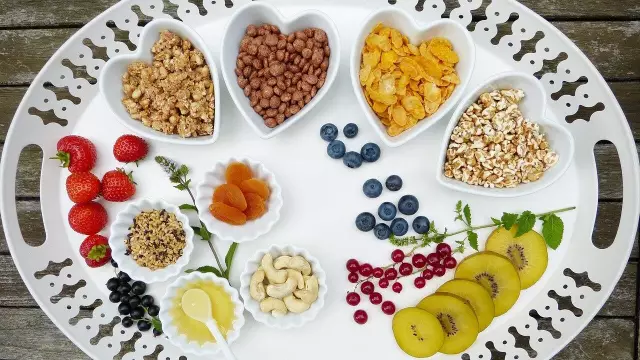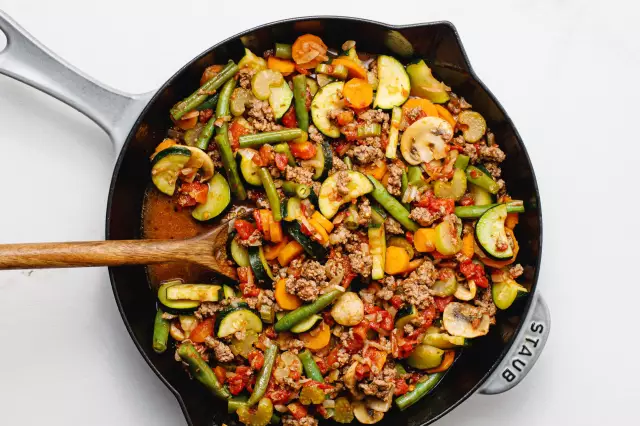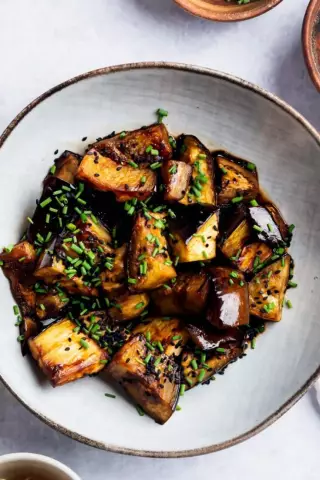- Author Rachel Wainwright [email protected].
- Public 2023-12-15 07:39.
- Last modified 2025-11-02 20:14.
How to switch to separate meals: 6 first steps
Separate food is a food intake system based on the physiology of digestion, which is referred to as a method of recovery. According to nutritionists, the separate consumption of carbohydrate and protein products, which require different conditions of assimilation, helps to get rid of diseases of the gastrointestinal tract and serves as a preventive measure against diabetes mellitus, arthritis, food allergies, gallstone disease and many other disorders. The essence of the beneficial effect lies in the highest quality assimilation of products - without feeling of heaviness in the stomach, bloating, and the formation of toxins. A separate meal also allows you to lose weight, problems with which often accompany eating disorders.
Despite the many advantages of the system, the path to separate power supply is not always pleasant. According to statistics, more than half of people, having undertaken to comply with it, return to their previous diet. The most common reason is mistakes during a period when healthy eating has not yet become a habit. Small incremental steps are what nutritionists recommend when switching to a new diet. Let's talk about this in more detail.
Consult your doctor
The technique of Dr. Herbert Shelton is recommended for people suffering from heartburn, heaviness in the abdomen, and constipation. But patients with gastritis, gastric ulcer and some other ailments should first consult a doctor. After all, the increase in the proportion of plant foods in the diet recommended by a naturologist (up to 40%) is not always favorable for diseased organs of the gastrointestinal tract. For a healthy person, the transition to separate nutrition is generally beneficial, but consultation with a doctor is desirable in this case as well.

Source: depositphotos.com
Start with one fasting day per week
A gradual transition to separate nutrition, according to doctors, is preferable to a sharp one - both from a physiological and psychological point of view. As a result of the slow regime change, the body, accustomed to mixed food, adapts to the system without side effects (such as lethargy, loss of energy, stool disturbances).
An abrupt transition is a serious damage to the psyche, the degree of which depends on the degree of a person's habit of previous food. The period of adaptation is characterized by acute food dissatisfaction, coupled with a constant feeling of hunger. According to doctors, one should not test strength of will for strength: it is better to start with one fasting day a week, having learned not to mix meat with potatoes, pasta and bread.

Source: depositphotos.com
Limit your consumption of fast food and sweets
One of the important principles of separate nutrition is the rejection of harmful products, especially semi-finished products and fast food. It is necessary to exclude this high-calorie, but tasty food from the diet, but not necessarily immediately, especially in the first stages of following the system. To get used to the new diet, restrictions should be introduced gradually, replacing the proportion of harmful products with useful ones: fresh vegetables, fruits, herbs.
Similar requirements apply to sweets - sweets, pastries, cakes, ice cream, etc. It is impossible to immediately abandon what has long contributed to the production of the hormone of pleasure by the body, otherwise the joy from lightness in the stomach can be replaced by bad mood and depression. To begin with, it is enough to get along with a small amount of sweets 1.5-2 hours before or at the same time after a meal.

Source: depositphotos.com
Restore your drinking regimen
The first 2-3 weeks after switching to a new diet, toxins and toxins are intensively removed from the body. For successful cleansing of them, a person observing the rules of separate nutrition should consume at least 2-2.5 liters of liquid per day. At the same time, it is not recommended to drink immediately after a meal, otherwise the gastric juice will be diluted and the efficiency of assimilation of products will decrease. It is more advisable to use water in small portions throughout the day, waiting at least half an hour after eating.

Source: depositphotos.com
Plan your menu in advance
One of the major mistakes when switching to separate meals is the lack of a pre-planned menu. For someone who does not know what to eat at the moment, it is much easier to return to familiar dishes than to endure the feeling of hunger. As a result of frequent disturbances in the nutritional system, the beneficial effect for the body may turn out to be zero.
In the early stages of introducing a new regimen, it is easy to return to the previous version, since the person does not experience the usual pleasure of eating. In addition to pre-prepared meals that follow the principles of the system, doctors recommend that you include your favorite foods more often in the menu to compensate for the lack of pleasure from food.

Source: depositphotos.com
Limit loads
Additional physical or mental stress during a period when the body is under severe stress can weaken the immune system, disrupt hormones and cause rejection of innovations in nutrition. In a transitional time, in order to avoid exhaustion, it is better to exclude intense sports activities, leaving unobtrusive ones: exercises, yoga, massage. It is also better not to plan important events during adaptation: it is recommended to rest more, observing a measured daily routine.

Source: depositphotos.com
YouTube video related to the article:

Maria Kulkes Medical journalist About the author
Education: First Moscow State Medical University named after I. M. Sechenov, specialty "General Medicine".
Found a mistake in the text? Select it and press Ctrl + Enter.






